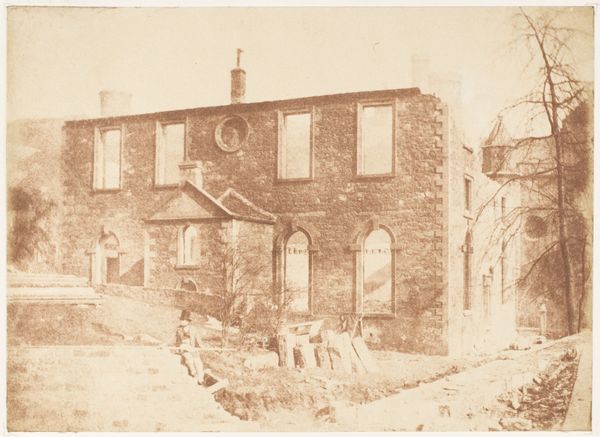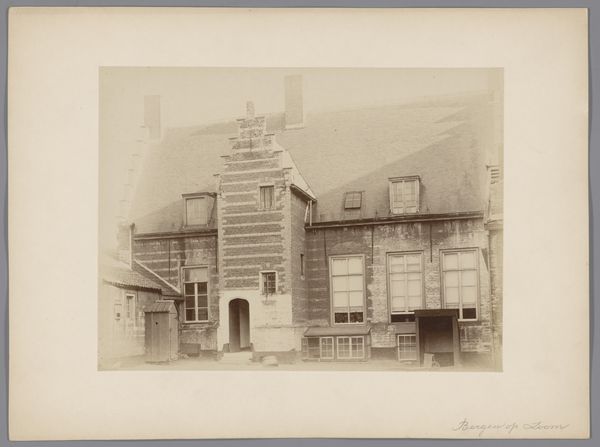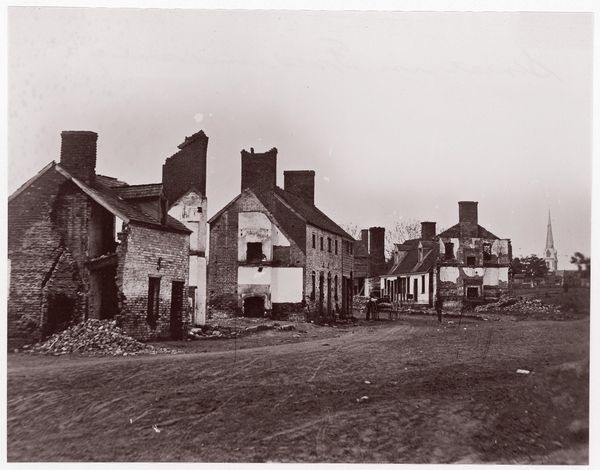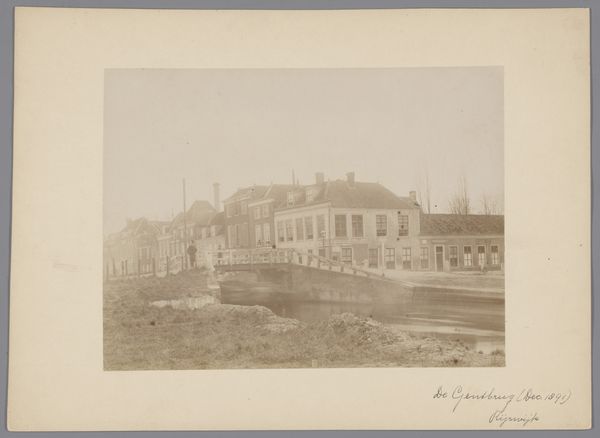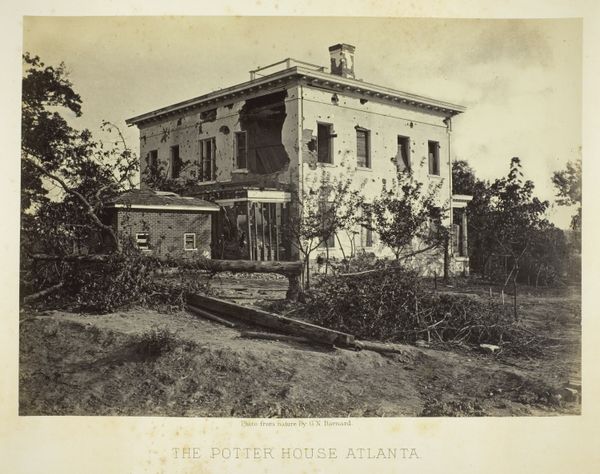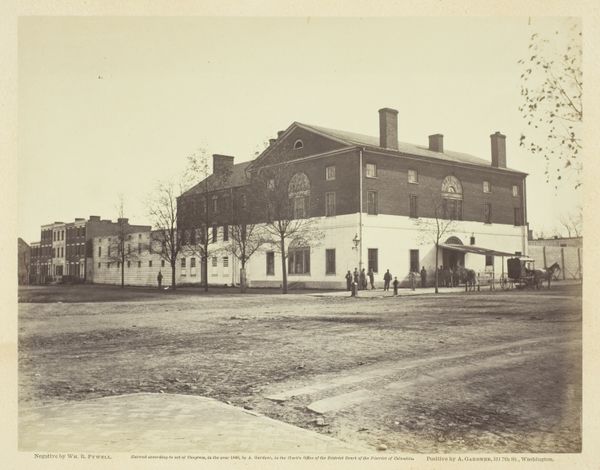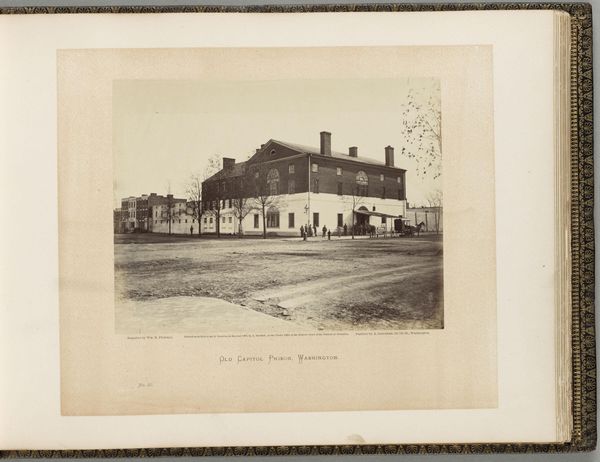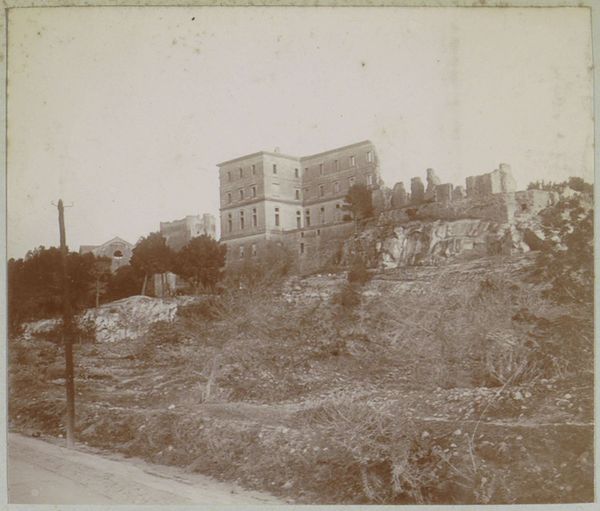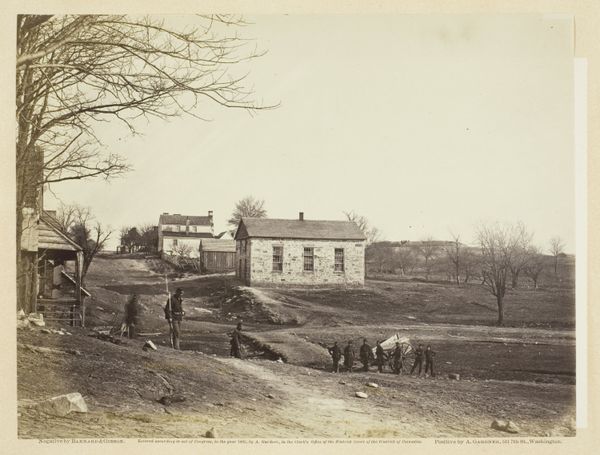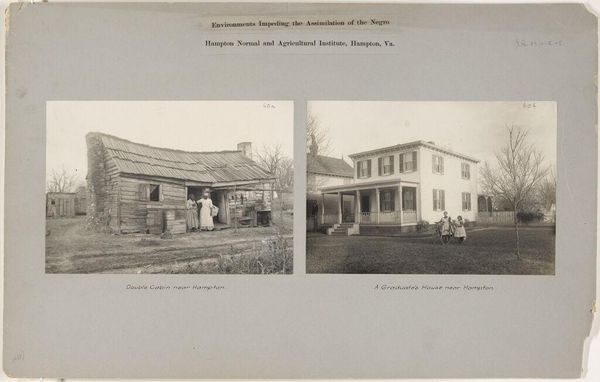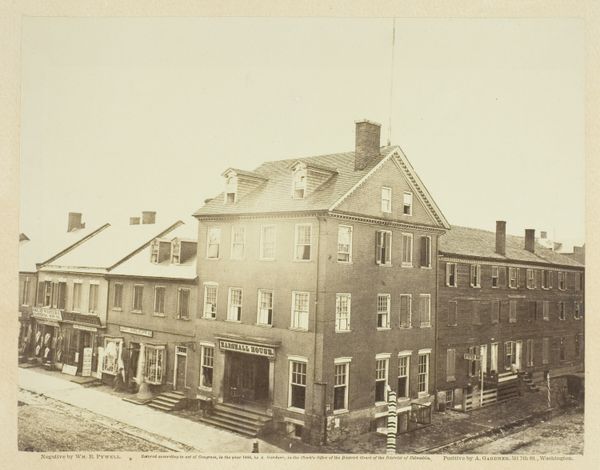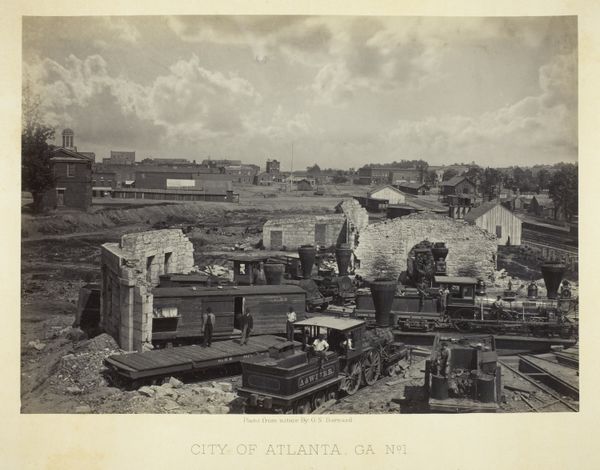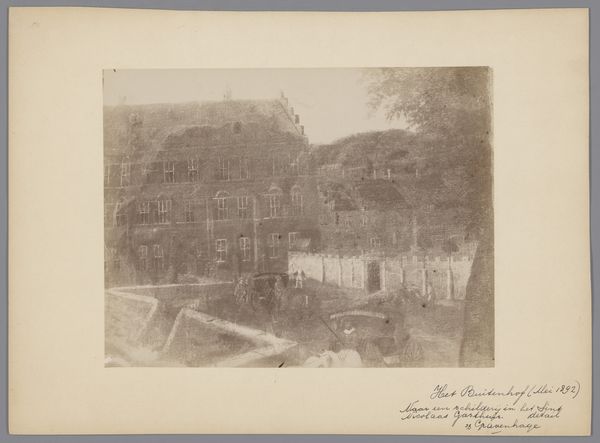
print, photography, site-specific, gelatin-silver-print
#
16_19th-century
# print
#
war
#
landscape
#
photography
#
site-specific
#
gelatin-silver-print
#
united-states
#
cityscape
#
history-painting
Dimensions: 25.6 × 35.8 cm (image/paper); 41 × 50.5 cm (album page)
Copyright: Public Domain
Curator: George N. Barnard's 1865 gelatin-silver print, "Ruins of the Pinckney Mansion, Charleston, S.C.," offers a chilling look at post-Civil War devastation. Editor: It feels heavy. Not just the literal weight of all that collapsed masonry, but the palpable sense of loss, you know? Like the sky itself is draped in mourning. Curator: The composition is quite striking, isn't it? The strong horizontal lines of the debris in the foreground almost act as a barrier. It forces us to confront the destruction before we even see the shell of the mansion itself. Editor: Exactly! And the stark contrast between the still-standing columns and the crumbling facade—it's such a powerful visual metaphor. I'm thinking about how the war changed not only the cityscapes, but the spirit and cultural values. Curator: The gelatin-silver process Barnard employed here yields such incredible detail, allowing us to see the texture of the brick, the rough edges of the shattered wood... It really puts us right there, in the immediate aftermath. Barnard used site-specific photography during the war. Editor: Site-specific war photography... it’s interesting because this image seems both completely present and yet somehow... absent. As if the house is merely a vessel, the ruin a mirror reflecting not only a lost world, but its fractured image, literally. Curator: That fragmentation you're observing—it’s visually mirrored in the broken elements. There's this interesting tension between the clear structure, which could give a sense of classical balance, and the actual imbalance it creates from destruction. Editor: Right, balance destroyed by imbalance. Maybe the formal order in the architecture only emphasizes what was violently *taken* from the structure and what was equally demolished—a past, and potentially the future—from those inhabitants within those brick walls, eh? The image haunts precisely for the unseen trauma and displacement we bring when witnessing a thing of beauty become nothing. Curator: Indeed. So, perhaps we aren't simply looking at ruins, but witnessing the photographic fragment of history as violence and grief converge. Editor: A ghostly stillness remains, leaving me thinking about both fragility and impermanence—and about the memories the bricks conceal.
Comments
No comments
Be the first to comment and join the conversation on the ultimate creative platform.
